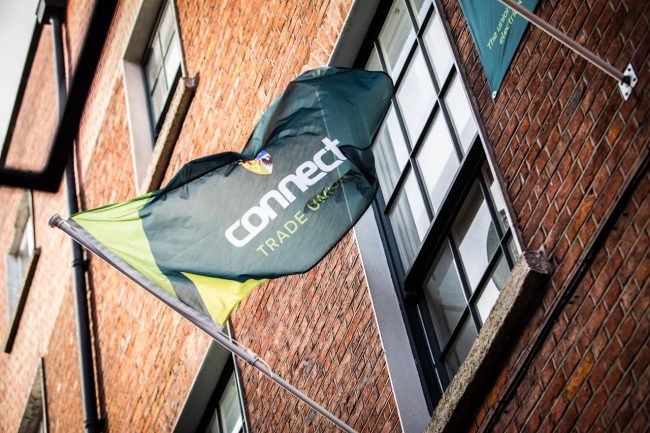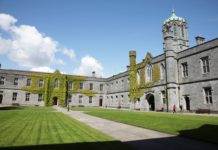The CONNECT Trade Union has its origins in the War of Independence and the breakaway Irish Engineering, Shipbuilding and Foundry Trades Union, writes Luke Dineen.
By 1914, Irish labour had little to show for the previous twenty-five years of struggle and was poorly placed to counter the First World War’s impact on workers. The war fundamentally altered the state’s role in industrial relations, especially in the metal trades. The British economy effectively became a planned one geared towards the production of munitions, albeit within a capitalist framework.
The sudden need for ships, bullets and bombs made engineering workers vital to the war effort, giving the London-based Amalgamated Society of Engineers (ASE) – which also organised Irish craftsmen –unprecedented power. Cooperation with the government brought the ASE executive into the British establishment, making it hostile to Irish separatist aspirations and deepening the chasm that had already existed between the society and its Irish membership. Many Irishmen had concluded that their union’s leadership had little understanding of Irish needs, which were different to those of an industrialised country like Britain.
The war destabilised conservative politics and created the space for radicalism to flourish, of which the Easter Rising was a direct consequence. Ulster Unionists responded by tightening inter-class bonds among Protestants. Republican revolution and disillusion with British union leaders led to eleven breakaway Irish unions being established between 1917 and 1923. Of these, the craftsmen’s union – the predecessor of Connect Trade Union – has been the most enduring.
A new craft union
Constance Markiewicz had championed the concept of an all-encompassing Irish craft union since 1917. At that year’s Ard Fheis, Sinn Féin adopted a resolution to support those Irish workers severing their connection with British unions. In 1918, a committee was formed within the IRB to infiltrate the ‘amalgamateds’ and to end their presence in Ireland by launching Irish alternatives.
In Autumn 1919, Michael Collins established a ‘Secret Service Unit’, codenamed the ‘Labour Board’, to secure influential positions for republicans within the labour movement. Collins hoped to secure control over vital economic sectors so that workers there could be called upon to cripple British counterinsurgency efforts against the IRA. Hence, the Labour Board prioritised the establishment of an engineering union “to get in control of the power stations”.
In early 1920, the Board instituted a committee to organise an Irish engineering craft union. Jack Redmond, ASE Dublin district secretary, was made president of the committee and Patrick McIntyre, from the southern district of the Iron Moulders’ Society, was made secretary. The committee also included Joseph Toomey, fitter; Michael Slater, brass moulder; Rory Bent, fitter; John J. Rooney, coachbuilder; Christopher Farrelly, iron moulder; Michael Doyle, shipwright; and Robert Donohoe, electrician.

McIntyre had been elected to Dublin Corporation for Sinn Féin in the municipal elections held on 15th January 1920. Toomey and Slater were unsuccessful candidates for the party. With such strong links to Sinn Féin, Redmond’s committee had little difficulty in establishing channels of communication. In March 1920, Joseph McDonagh – TD for North Tipperary and brother of 1916 leader Thomas McDonagh – met the men for talks. Setting up the union would be expensive and required backing from the Dáil. They sought a £2,000 bank loan – equivalent to €104,000 in today’s money – a huge sum for the fledgling Department of Labour where running costs for 1920 were well under half of that.
The men believed that the political climate made an Irish engineering union viable, which would “spell the death knell for English unions in this country”. McDonagh forwarded the request to the Department of Labour. Shortly afterwards, Collins asked Markiewicz, now Minister for Labour in the republican government, to meet the men, which she did on 5th May accompanied by TDs Art O’Connor and Sean Etchingham.
The committee again requested that the government guarantee the £2,000, including a £100 (€2,100) advance to cover the union’s inauguration. Markiewicz was convinced of the proposed union’s merit and on 7th May, she forwarded £100 to the men for a public meeting to launch their union. ‘
‘Out for no trouble’
Two days later, over 700 craftsmen packed into the Abbey Theatre to witness a historic event: the launch of Ireland’s first national engineering craft union. Republican fervour was palpable at the meeting at a moment when the War of Independence was intensifying. On that day alone, republicans at Wormwood Scrubs were on their nineteenth day of hunger strike for political status; elsewhere, the IRA attacked police barracks in Cork and Armagh. Toomey, who presided over the meeting, argued that the interests of Irish and British workers clashed because “they were two separate and distinct peoples and could not always view matters from the same standpoint”.
McIntyre announced that while “they were out for no trouble” with the amalgamateds, the new union would “fight them here on Irish soil” if they refused to recognise it. The meeting christened the new union the ‘Irish Engineering, Shipbuilding and Foundry Trades Union’ and appointed the Provisional Executive Committee as an organising committee.
Despite its republican origins, the new union would have to prove its worth in the industrial sphere against some of Ireland’s most intransigent employers, a struggle which continues to this day.





